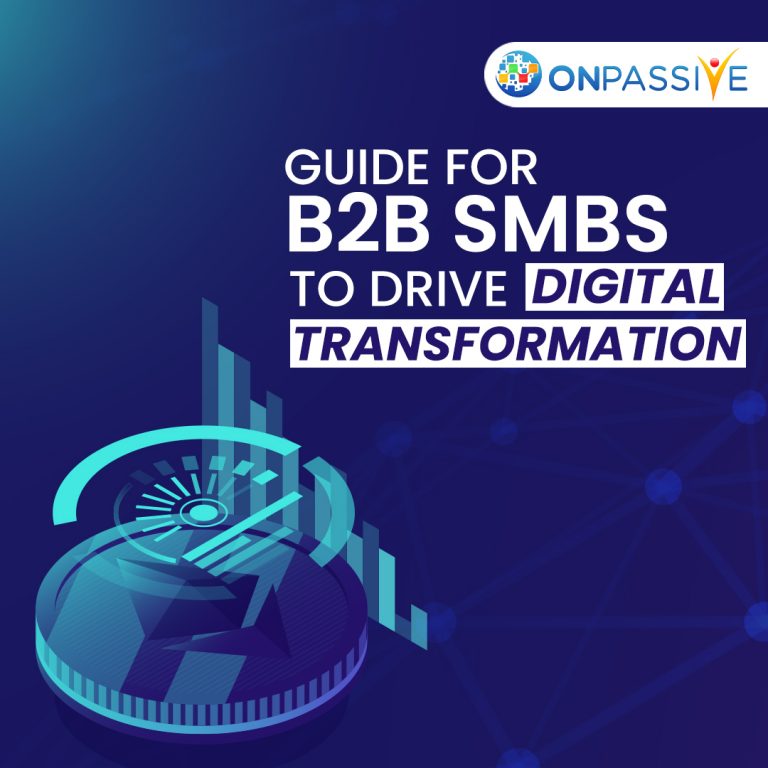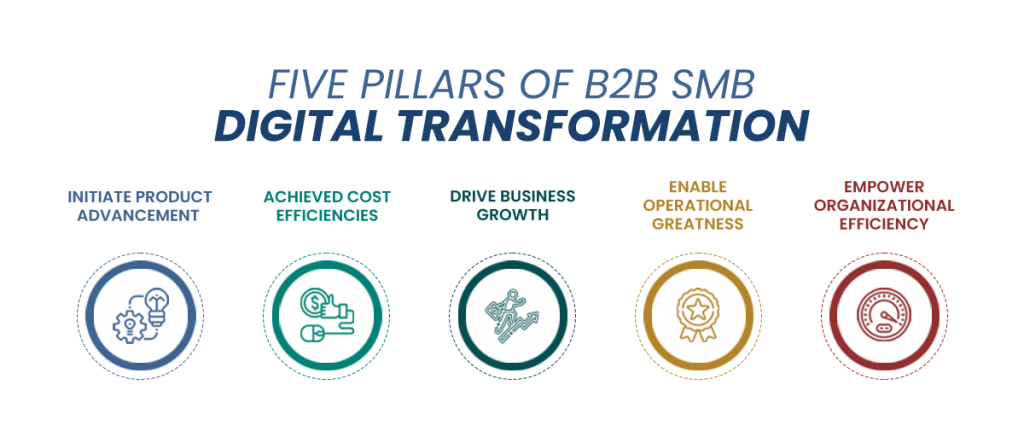
Regardless of what industry they’re in, B2B small business entrepreneurs share a few things in common: limited time and assets, generally small financial plans and a desire to self-educate. Regarding promoting and marketing to private small businesses, it’s significant for organizations to comprehend these pain points to help small and midsize business (SMB) owners settle their challenges.
More marketers than any other time are fueling growth through advanced B2B SMB digital transformation. Be that as it may, with the stakes so high, we need to ensure you get your advanced digital transformation strategy right, the first time.
Discover the success factors for making a digital transformation strategy to develop your business, set out to find out about the implementation cycle for your digital transformation subsequent steps, and investigate our advanced digital transformation research.
Why create a digital transformation strategy?
The requirement for transformation is firm in larger, worldwide brands and organizations that need to deal with the difference in presenting new processes, structures, skills, and technologies. Even though it’s currently more than 25 years since the first pioneers began to utilize the Internet for marketing, new strategies like web and email marketing would offer modest, quick and straightforward procedures to reach new business sectors.
SMBs and Digital Transformation: What Pioneers Are Doing and Saying
A new overview of small and midsize businesses (SMBs) found that 51% are quickening digital transformation investments and priority. They additionally noticed that the pandemic enhanced this. The push to turn out to be more digital has worth, and they know it.
The main drivers behind this race are to embrace incorporate diminishing costs, improving operations, inspiring innovation, boosting business development, and improving efficiency.
Five Pillars of B2B SMB Digital Transformation:
- Initiate product advancement
- Achieved cost efficiencies
- Drive business growth
- Enable Operational greatness
- Empower organizational efficiency

The pandemic conveyed both disruption and opportunity. Individuals unexpectedly shop for services and products, even in the B2B domain. eCommerce quick turning into a necessity for B2B, as Forrester predicts it will hit $1.8 trillion in the U.S. by 2023, representing 17% of deals.
Why Change?
Outside of the pandemic making it required, B2B purchasers are changing in other ways. Presently, around 73% of those settling on B2B purchasing decisions are recent college grads. They are advanced digital natives that want to need simple, and convenient approaches to purchase.
You are meeting your client where they presently require robust digital channels. It would help if you stood out for them with content marketing endeavors that exhibit solutions, thought leadership and expertise. Your content needs to rank well to get found in those searches, requiring an investment in organic Search engine optimization (SEO).
Further, when a client shows up at your site, it should be easy to navigate and find answers. It would help if you additionally had either an eCommerce framework to sell physical products or a self-guided encounter for clients so they can buy your application or service.
Fortunately, these results are not far off for B2B SMB digital transformation. There are explicit techniques to actualize that will accelerate or reinforce your advanced digital transformation.
The Guide to Digital Transformation: Directions Ahead!
Utilizing the Right Technology
Advanced digital transformation can’t happen without technology. While considering the technology that empowers digital transformation, there is no ideal stack. It should uphold the following three conversation areas: digital marketing, employee necessities, and client experiences.
A word of advice is to limit the number of platforms you use. It gets convoluted and expensive fast. Take a gander at how one to two platforms can deliver what you need, for example:
- Unified communications (UC) for employees: This sort of platform unites communications and collaboration together— video, voice, instant texting, file sharing, and more.
- Marketing platforms consolidate web, social, email, metrics, and work processes in one instinctive application.
- eCommerce frameworks deliver customized proposals, make checkout secure and straightforward, and gather information on client behaviours.
Enabling Your Team
The following segment of B2B SMB digital transformation is supporting your employees. For this cycle, the objective is to improve team agility and productivity. You’re asking them to adapt at record speed. COVID-19 probably accelerated numerous initiatives here. To guarantee your team prevails through this change, you must empower them.
There are two different paths to do this. First, they need the right technology stack to communicate and work together to oversee processes, develop, and scale. They won’t have the option to reach the goals you set with disparate legacy systems.
Second, colleagues should be necessary for the conversation. Cultural change is top-down, yet it never works except if everybody’s on the same wavelength. Straightforwardly impart to your staff about the why, how, and what of advanced digital transformation. It will provide the knowledge and offers straightforwardness, which employees appreciate.
Investing resources in Digital Marketing
Numerous B2B SMB digital transformation tactics utilize digital marketing to create traffic and lead. Be that as it may, they additionally spend a significant sum on event marketing and sales travel. Those are presently accessible for other uses. Utilizing them to invest resources in critical areas of digital marketing will help audiences find and purchase from you.
- You were improving your advanced digital channels, including adding eCommerce business growth functionality or revamping your site. Site updates could involve virtual product tours, directed personalization by guest, and adding chatbots to respond to questions.
- Content promoting and marketing: An investment in content marketing improves your natural organic positioning, which prompts more site traffic. Without purchasers discovering you online, you can’t sustain an advanced digital ecosystem.
The New Client Experience
B2B purchasers aren’t new to the digital experience and involvement with brands. Notwithstanding, you need to leverage digital tools to create experiences you can’t have face-to-face anymore. Overcoming any issues here could produce some fantastic innovations and developments.
For instance, you could host virtual events with your thought leaders, clients, or others in the field. You could also employ augmented reality (AR) or virtual reality (VR) as a business growth sales tool. Other smaller-scale alternatives incorporate video chats or adding new highlights to your application that settle unique challenges.
B2B SMB Digital Transformation: Time to Keep Progressing
Digital transformation isn’t a process that ever ends. The innovation, market elements, and client needs will continue reshaping the idea. Your emphasis should be on having intuitive tools, supporting employees, investing in digital marketing, and delivering remarkable customer experiences in the current environment.


